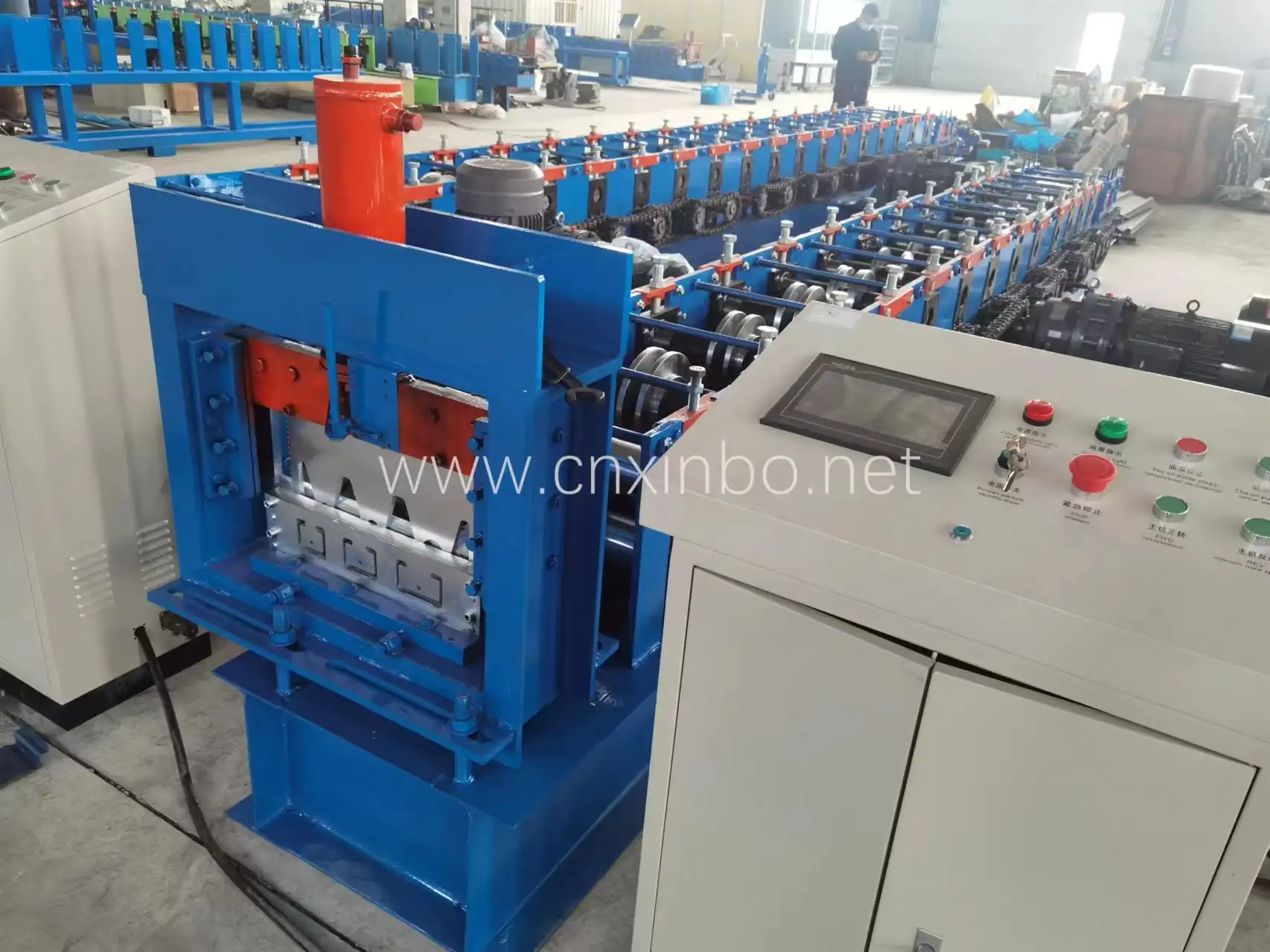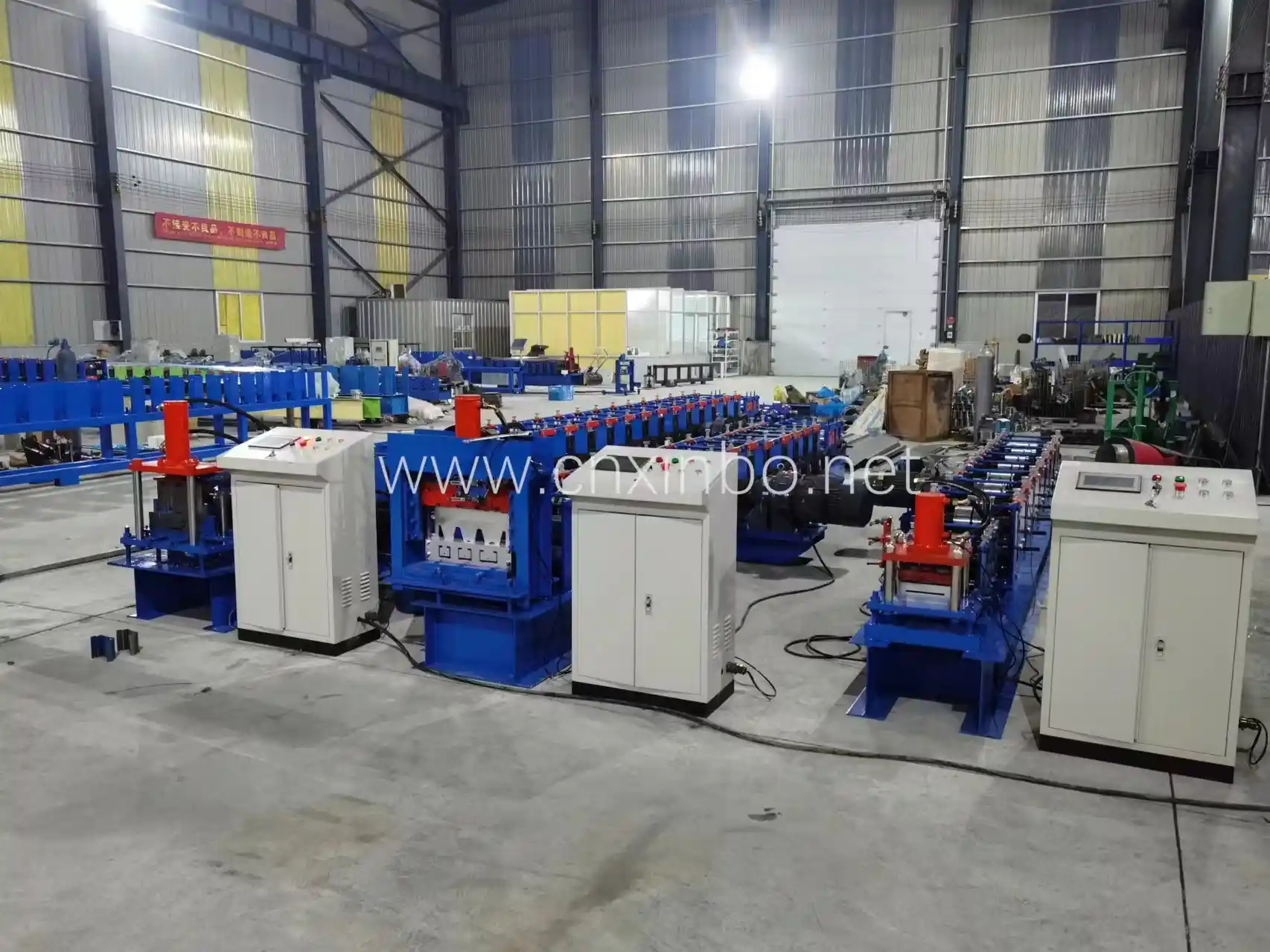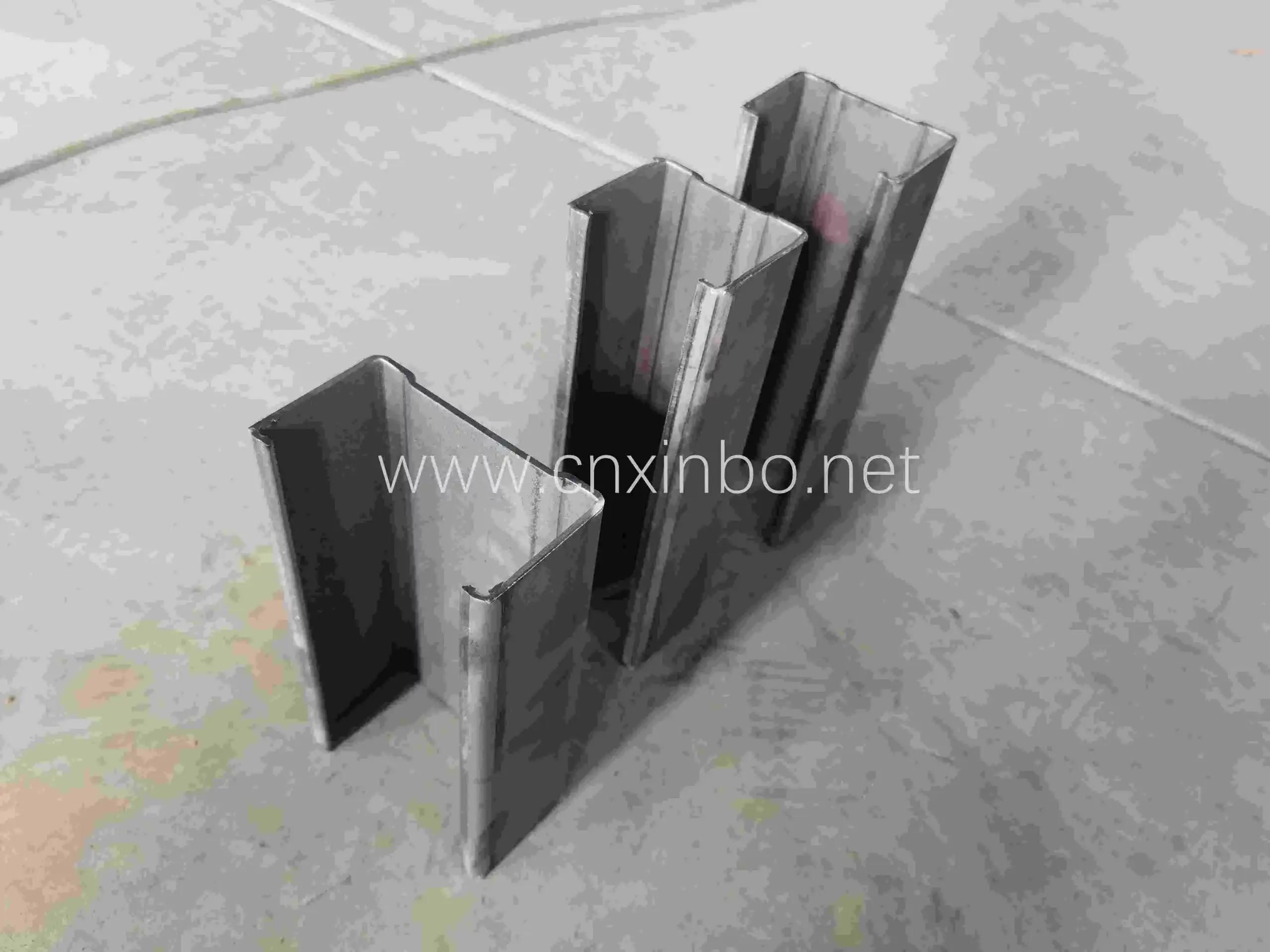Good quality
XinBo machine making CO. LTD is a professional manufacturer and exporter in roll forming machine,
VIEW MORE→Purlins serve as fundamental structural elements in the construction of building roofs and walls. Extending across the entire length of a structure, these horizontal beams are indispensable in supporting roof loads and transferring them to the primary framework. Purlins significantly contribute to the structural integrity of roofs, enabling them to endure external forces such as wind, rain, and snow. Their effective weight distribution is crucial for ensuring the durability and longevity of any building.
Purlins are predominantly used in the construction of commercial, industrial, and residential buildings. They form an intrinsic part of the roof’s framework, ensuring that the roof decking stays firmly in place. Purlins are commonly found in metal buildings, particularly in warehouses, factories, and large retail spaces. They are also used in smaller constructions such as garages and agricultural buildings. Their adaptability and strength make purlins indispensable in various construction scenarios, providing both support and stability.
XINBO machine is a manufacturer which established in China since 2014. Quality assurance is provided by a team of our machine professional desiginer and producters and workers. New and innovative technology,such as roll forming machine, for the Europe, UK and Canada, as customer’s request and class. And we also have standard class for normal consumption.
Purlins are usually made from high-strength metals to endure the load and environmental conditions they will face. The most common metals used include steel and aluminum. Steel is the preferred choice for its remarkable strength and durability, making it suitable for larger, heavier structures. Galvanized steel, which is coated with a layer of zinc, is often used to enhance corrosion resistance. Aluminum purlins, on the other hand, are lightweight and resistant to rust, making them ideal for structures in coastal or humid environments. Both metals are selected based on the specific requirements of the construction project.
While metal purlins are prevalent, other materials can also be used, though less commonly. Timber purlins were traditionally used in older structures and are still employed in some residential buildings. However, timber is less popular today due to its susceptibility to weathering and termites. Composite materials, which blend properties of metals and non-metals, are also utilized in certain specialty constructions. These materials offer unique benefits like reduced weight and added flexibility, making them suitable for specific applications. The choice of material largely depends on the structural demands and environmental factors of the construction site.

A purlin machine is a specialized piece of equipment designed to manufacture high-quality purlins efficiently and accurately. It accomplishes this by processing raw materials, such as steel or aluminum, into the desired shapes and dimensions used in construction. The machine typically features a combination of rollers, cutters, and feeders that work in unison to form and shape the purlin. Advanced purlin machines are equipped with automated systems and software, ensuring precision and reducing manual intervention, thereby increasing productivity.
There are several types of purlin machines, each designed to cater to various manufacturing needs. One common type is the roll forming machine, which gradually bends metal sheets into the required purlin profile through a series of rollers. Another type is the press brake machine, which uses a punch and die to press the metal into shape. Some purlin machines are versatile and can produce multiple types of purlins, such as C-purlins and Z-purlins, by simply changing the tooling setup. Modern purlin machines may also incorporate punching units that create holes or slots as the metal is formed, adding to the functionality and reducing the need for separate machining processes.
The manufacturing process of purlins begins with thorough design and planning. This initial stage involves selecting the appropriate materials based on the structural requirements and environmental conditions of the construction project. Engineers also determine the exact measurements necessary for the purlins, taking into account the specific dimensions and load-bearing capacities required. Advanced software is often used in this phase to create precise design blueprints, ensuring that every detail is meticulously planned before the manufacturing process begins. This careful planning is crucial for producing purlins that meet stringent industry standards and specifications.
Material selection is a critical step in the manufacturing process. The choice of material, whether it be steel, aluminum, or another suitable metal, has a significant impact on the purlin’s performance and longevity. Various factors, such as strength, weight, and environmental resistance, are considered to choose the most appropriate material. For instance, galvanized steel may be selected for its excellent corrosion resistance in harsh environments, while aluminum might be chosen for its lightweight and rust-resistant qualities in areas with high humidity. Proper material selection ensures that the purlins will perform optimally throughout their lifespan.
Once the material is selected, the next step is measurement and cutting. Precision measuring tools and automated systems ensure that the raw material is accurately measured according to the design specifications. The material is then cut into specific lengths using high-precision cutting equipment, such as guillotines or laser cutters. This step is vital for maintaining the exact dimensions required for the final product, as any deviation can affect the integrity and fit of the purlins when installed. Precision in measurement and cutting is essential for ensuring the quality and consistency of each purlin produced.
The forming and shaping of purlins involve several methods, each tailored to achieve specific profiles and dimensions. The most common methods include roll forming and press brake forming, while additional processes like punching holes and slots are often integrated to enhance functionality. These processes transform the raw, cut material into the final purlin shapes required for construction.

The roll forming method is a continuous bending process where metal sheets are progressively shaped through a series of rollers. Each roller set gradually bends the metal until the desired purlin profile, such as C or Z shapes, is achieved. This method is highly efficient for producing large quantities of purlins with consistent profiles. Roll forming machines are automated and precisely controlled, allowing for minimal manual intervention and ensuring uniformity across all produced units. The process is particularly advantageous for its speed and ability to handle long lengths of metal, making it ideal for mass production.
The press brake method uses a press brake machine equipped with a punch and die to bend the metal into the required shape. This method is typically used for producing shorter runs or customized purlins where specific bends and angles are necessary. The machine precisely applies force to the metal sheet, bending it into the desired profile. While not as fast as roll forming, the press brake method provides greater flexibility in producing custom shapes and sizes. It is often employed for projects that require bespoke purlin designs, accommodating unique architectural or structural requirements.
Adding holes and slots to purlins is an integral part of the manufacturing process, as these features facilitate easier installation and connection to other structural elements. Advanced purlin machines incorporate punching units that operate alongside the forming process. These units can punch holes and create slots at predetermined locations while the metal is being formed. This integration ensures that each purlin is ready for immediate use without the need for additional machining. The precision of the punching process also contributes to the structural integrity and usability of the purlins, streamlining construction workflows.
Maintaining high-quality standards is paramount in the manufacturing of purlins. Quality control and testing procedures are implemented at various stages of production to ensure that each purlin meets industry specifications and performance criteria. These procedures include visual inspections, dimensional checks, and mechanical testing to evaluate the strength and durability of the purlins. Advanced technologies such as laser measurement systems and nondestructive testing methods are employed to detect any flaws or deviations. By rigorously enforcing quality control measures, manufacturers can guarantee the reliability and safety of their purlins, providing confidence to builders and architects alike.
One of the significant advantages of using a purlin machine is the ability to customize the size of purlins according to specific project requirements. Manufacturers can adjust the width, height, and thickness of purlins to suit different structural demands. This flexibility allows for the production of purlins that perfectly fit the design specifications of various buildings, ensuring optimal performance and structural support. Whether it’s for a large commercial complex or a small agricultural shed, the ability to tailor purlin sizes enhances the adaptability and applicability of these critical structural components.
In addition to size adjustments, purlins can undergo various surface treatments to enhance their durability and performance. Common surface treatments include galvanizing, powder coating, and painting. Galvanizing involves coating the purlins with a layer of zinc to prevent rust and corrosion, making them suitable for use in moist or coastal environments. Powder coating and painting provide additional protection and can be customized in different colors to match aesthetic preferences or brand identities. These treatments not only extend the lifespan of the purlins but also add an extra layer of functionality and visual appeal.

The use of a purlin machine significantly enhances the efficiency and speed of the manufacturing process. Automated systems and precision engineering allow for the rapid production of high-quality purlins with minimal manual intervention. This efficiency reduces production times and increases output, enabling manufacturers to meet tight deadlines and manage large orders effectively. The streamlined process facilitated by purlin machines ensures that resources are utilized optimally, resulting in cost savings and improved productivity.
Consistency is a crucial factor in construction, as uniform components ensure the structural integrity and stability of buildings. Purlin machines provide exceptional consistency by replicating the same precise dimensions and shapes across multiple units. Advanced control systems and automation eliminate the variability often associated with manual production methods. This consistency translates to reliable performance and easier installation, as builders can trust that each purlin will meet the exact specifications required for their projects.
The cost-effectiveness of using a purlin machine stems from several factors, including reduced labor costs, minimized material waste, and increased production speed. Automated processes require fewer personnel, lowering labor expenses. Additionally, the precision of purlin machines ensures that materials are used efficiently, with minimal waste generated during production. Faster production times also mean quicker turnaround for projects, reducing overall costs for both manufacturers and consumers. These economic benefits make purlin machines a valuable investment for companies looking to enhance their competitiveness and profitability in the construction industry.
In summary, the intricate process of manufacturing purlins involves careful design, precise material selection, advanced forming techniques, and rigorous quality control. The use of specialized purlin machines not only enhances efficiency and consistency but also offers customization options that cater to diverse structural needs. These machines play a pivotal role in producing high-quality, reliable purlins that are integral to the construction of robust and durable buildings. By understanding these processes and leveraging the capabilities of purlin machines, manufacturers can deliver superior products that meet the evolving demands of the construction sector.
XINBO offers ODM (Original Design Manufacturing) services, ensuring that their machines are designed and made according to customers’ requests. They have a team of professional engineers and technicians who can design detailed drawings based on customers’ needs in a short time. Additionally, XINBO’s in-house workshop and CNC machining machines help save costs and ensure efficient production processes.

XinBo machine making CO. LTD is a professional manufacturer and exporter in roll forming machine,
VIEW MORE→

